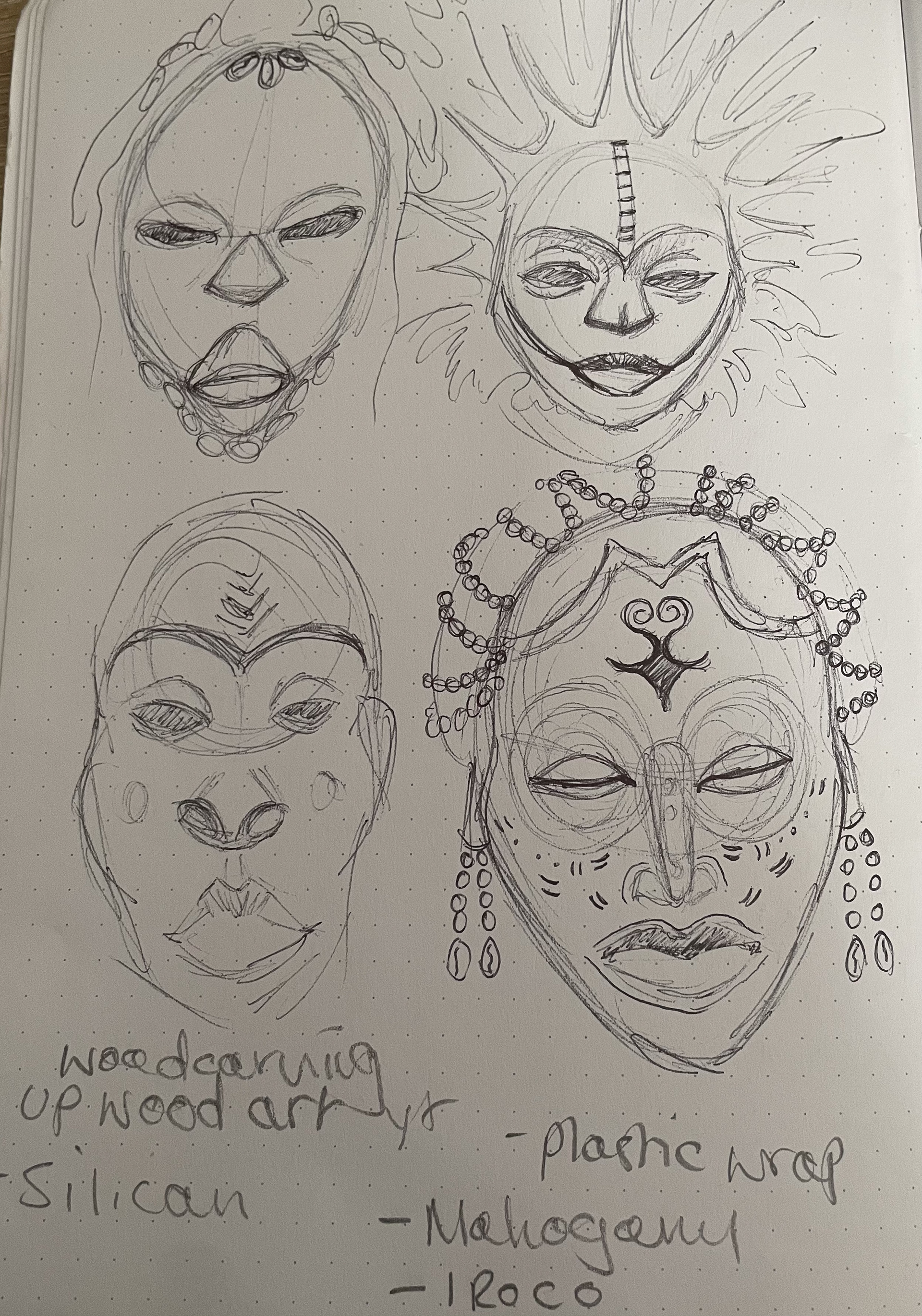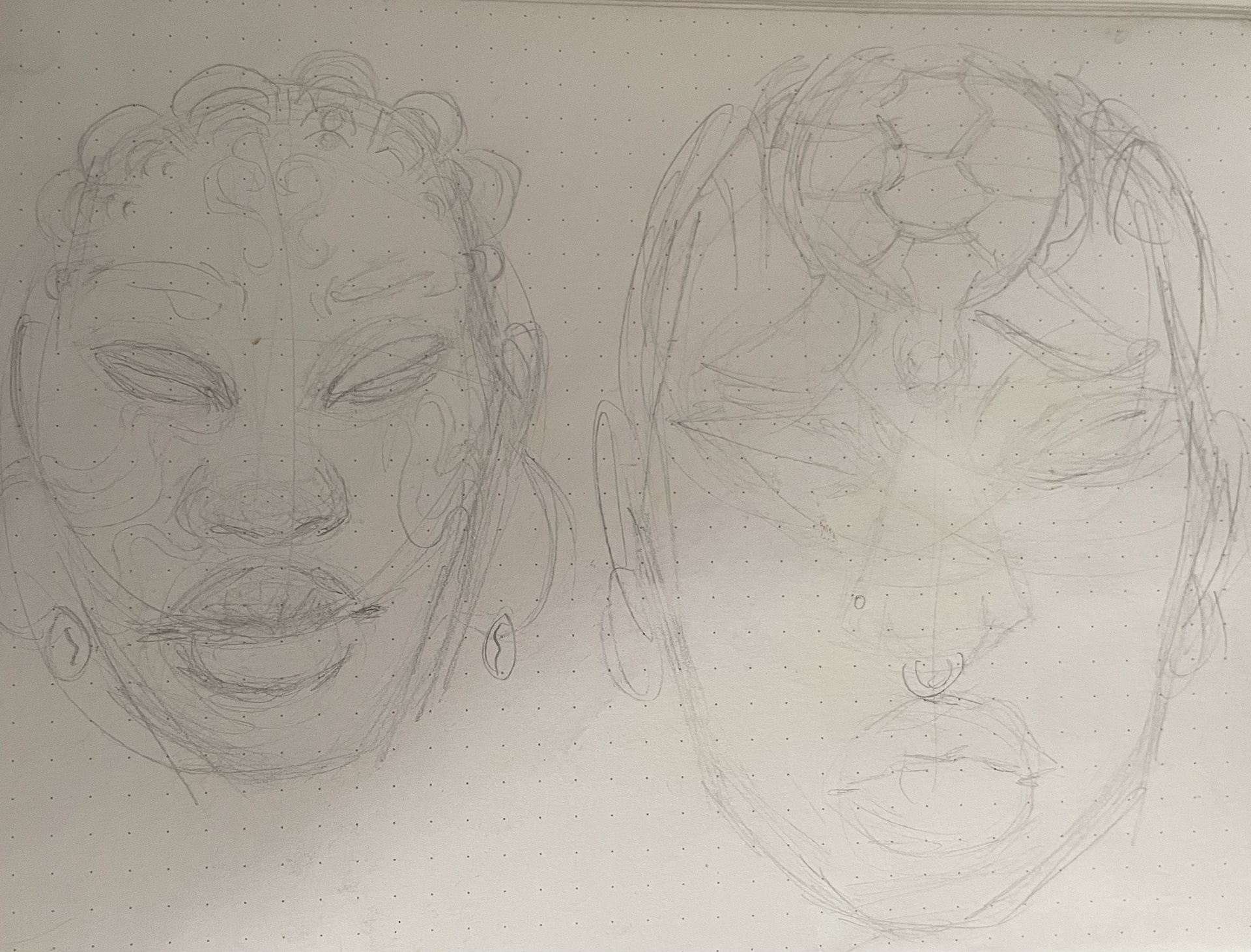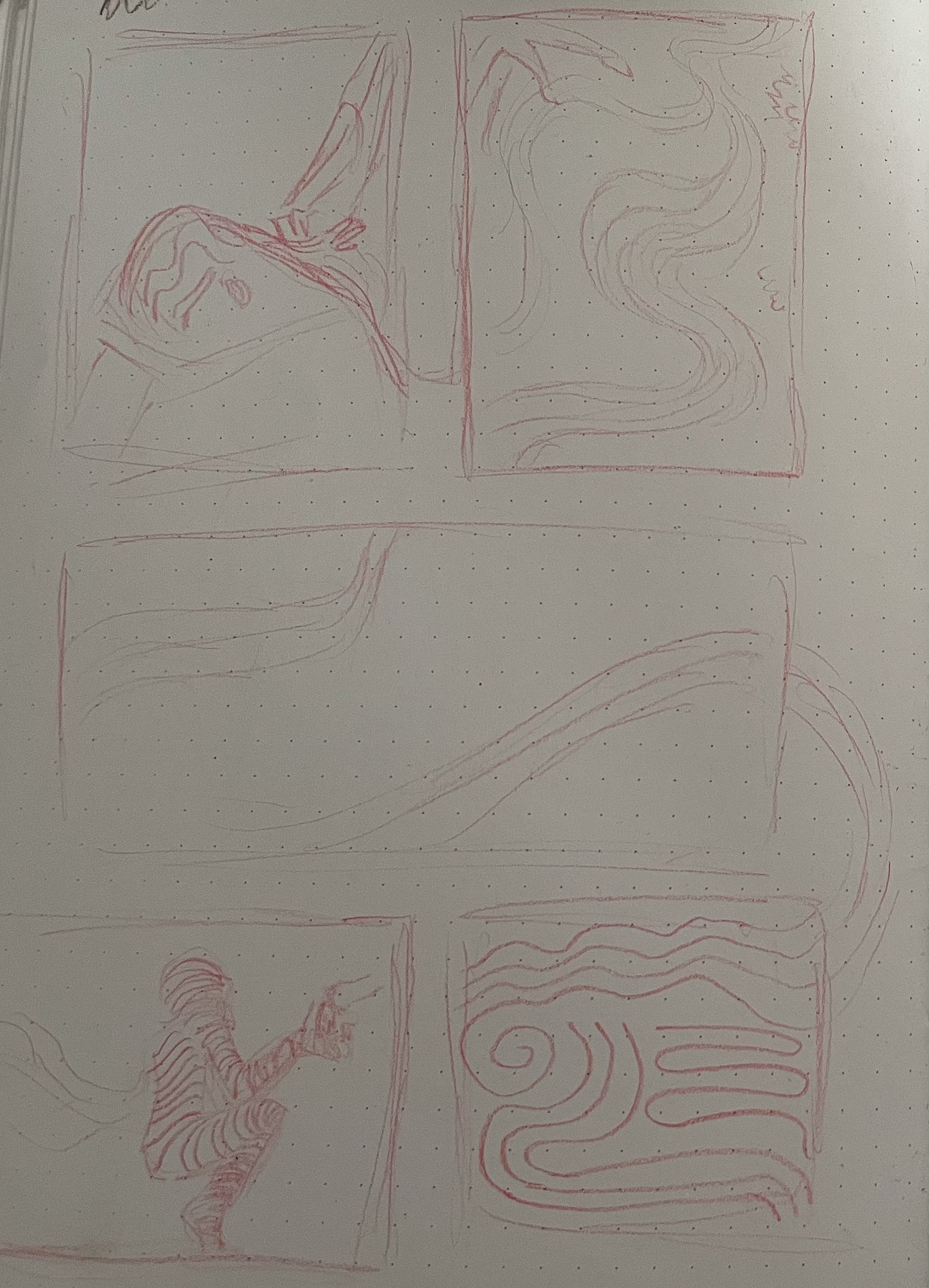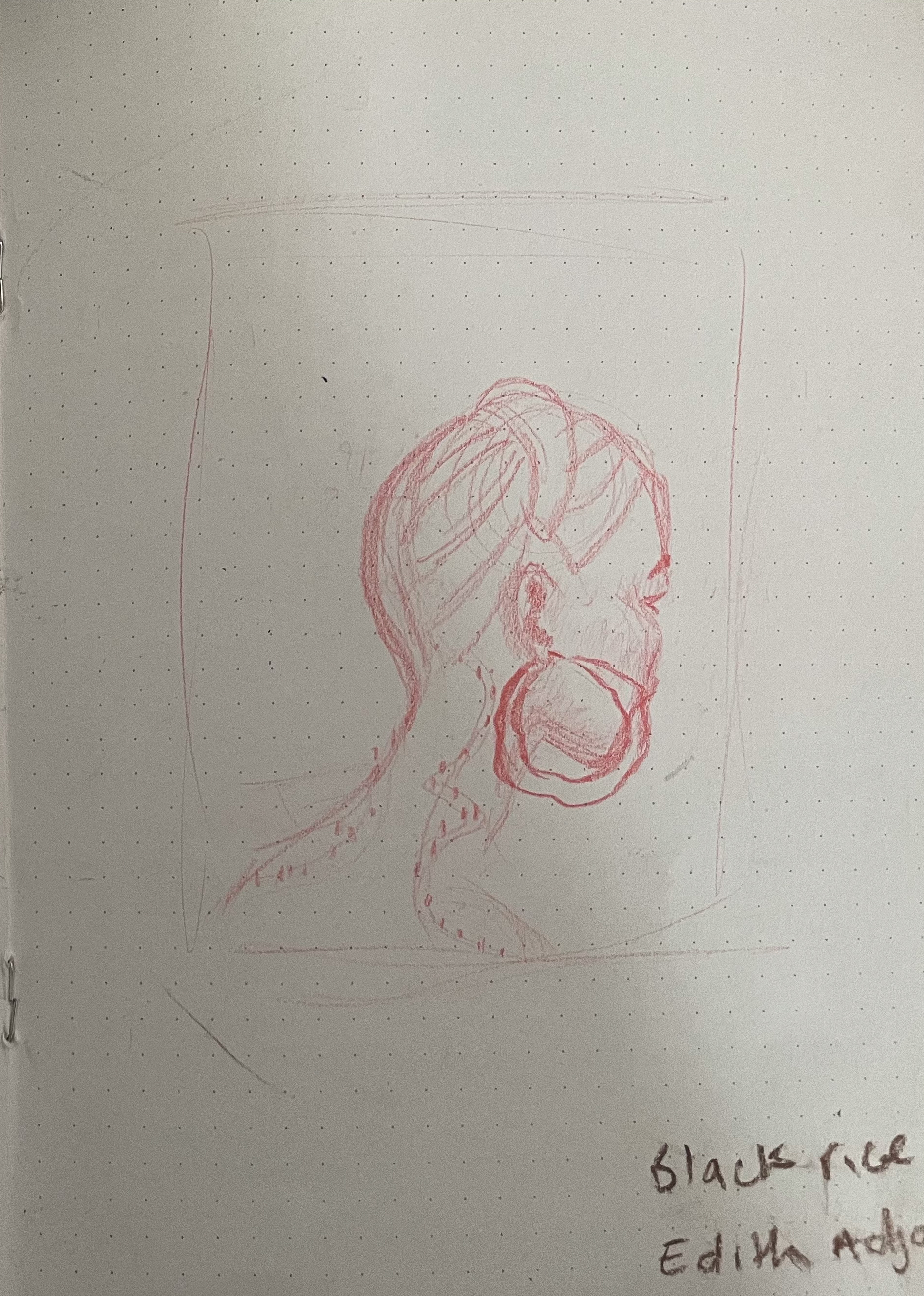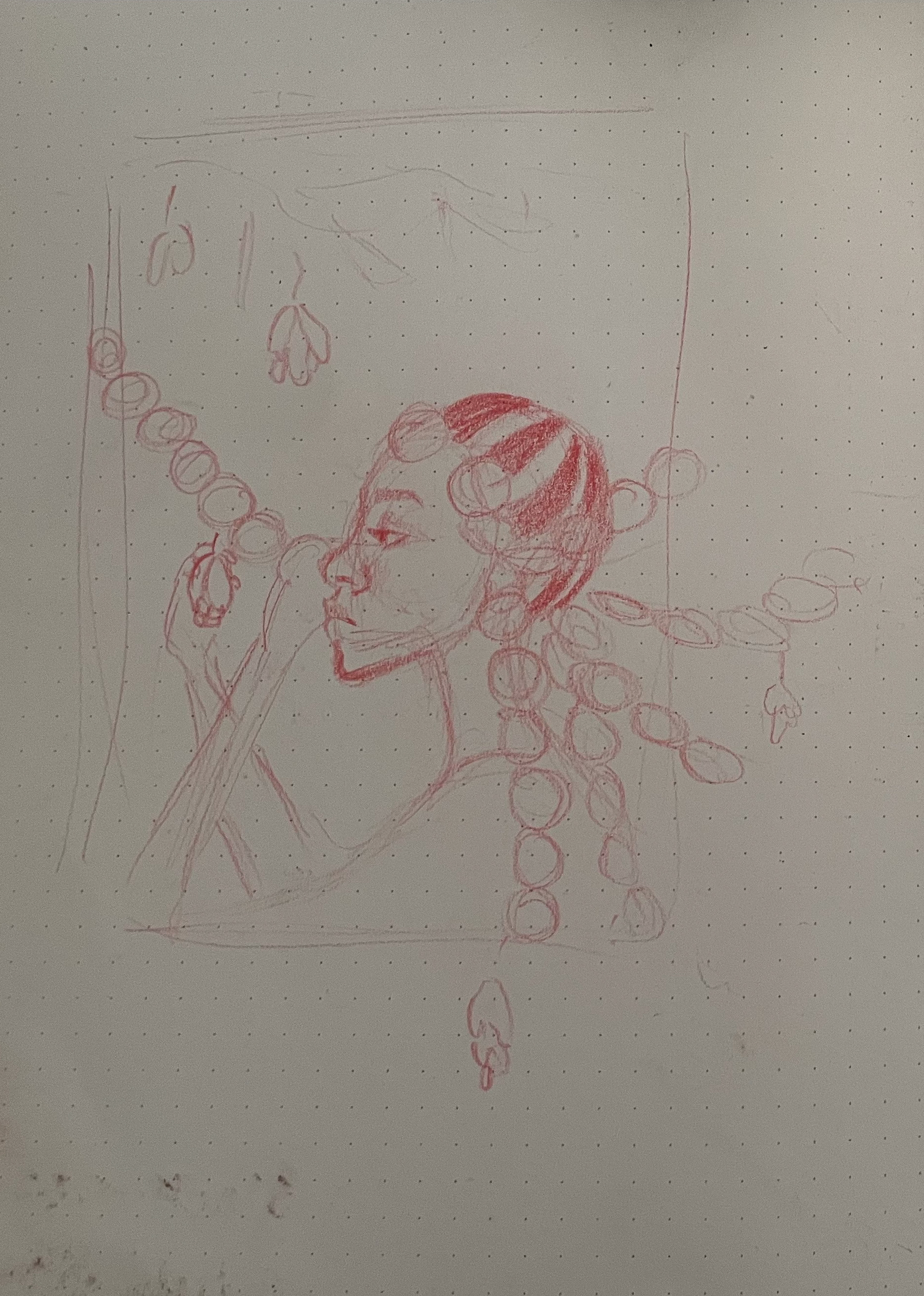Veronica Ryan, Custard Apple (Annonaceae), Breadfruit (Moraceae), and Soursop (Annonaceae) (2021)
Veronica Ryan, Sewing Seeds (2018)
Veronica Ryan's paradoxical use of materials in her sculptures often juxtapose organic forms with industrial or unexpected materials like plastic netting and found containers. This informed my approach to displaying my ackee sculptures for the degree show installation. Her work highlighted the tension between the natural and the manufactured, the local and the global, reflecting the complex histories of migration and trade that have shaped Caribbean culture. Ryans stated in an interview that the sculptures are for the community to connect to familiar representations, which resonated with with my own intention to evoke recognition and belonging through material and form. Inspired by her poetic use of materials to suggest both fragility and resilience, I incorporated recycled paper, clay, and found packaging like fruit nets to reference both the organic nature of the produce and the globalised systems of its distribution, further layering narratives of displacement and cultural exchange within the familiar forms.


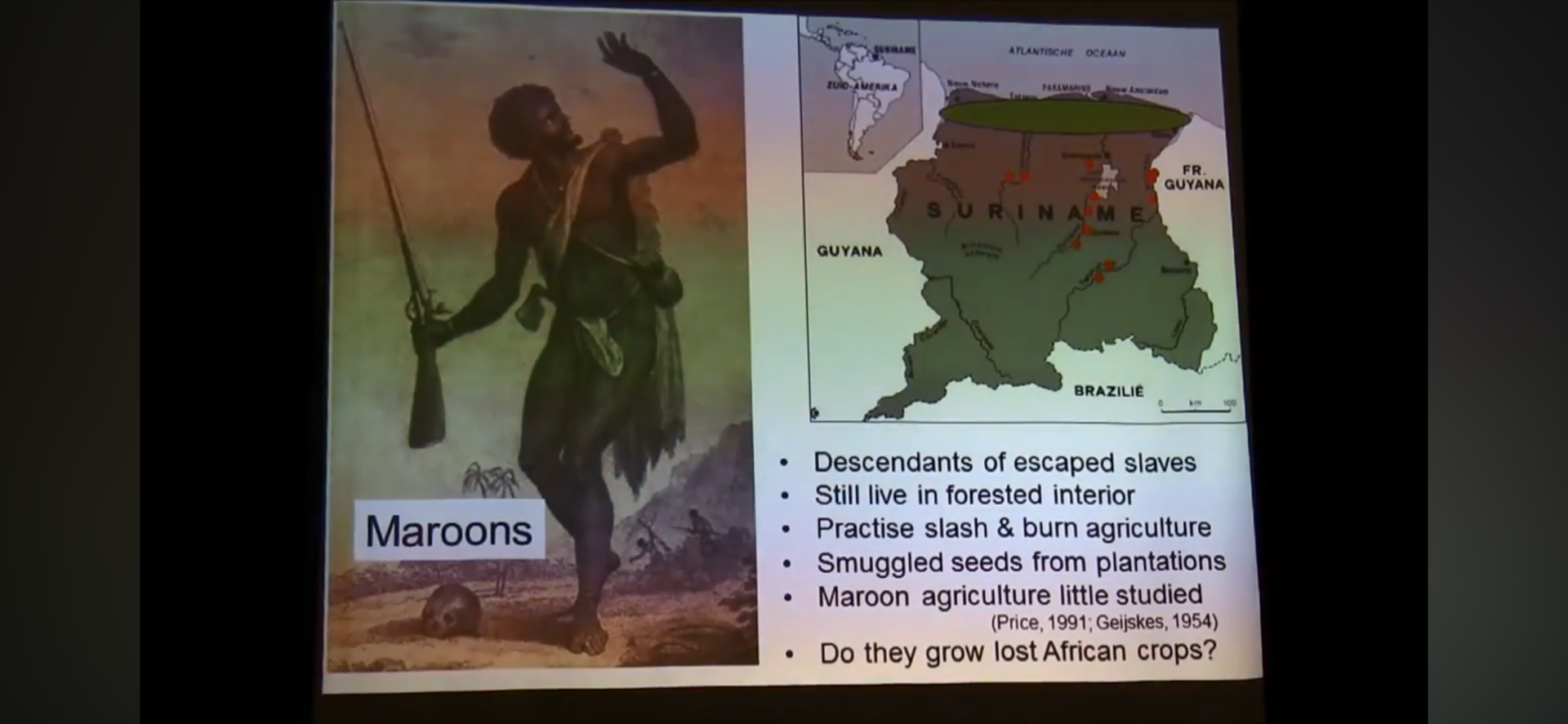

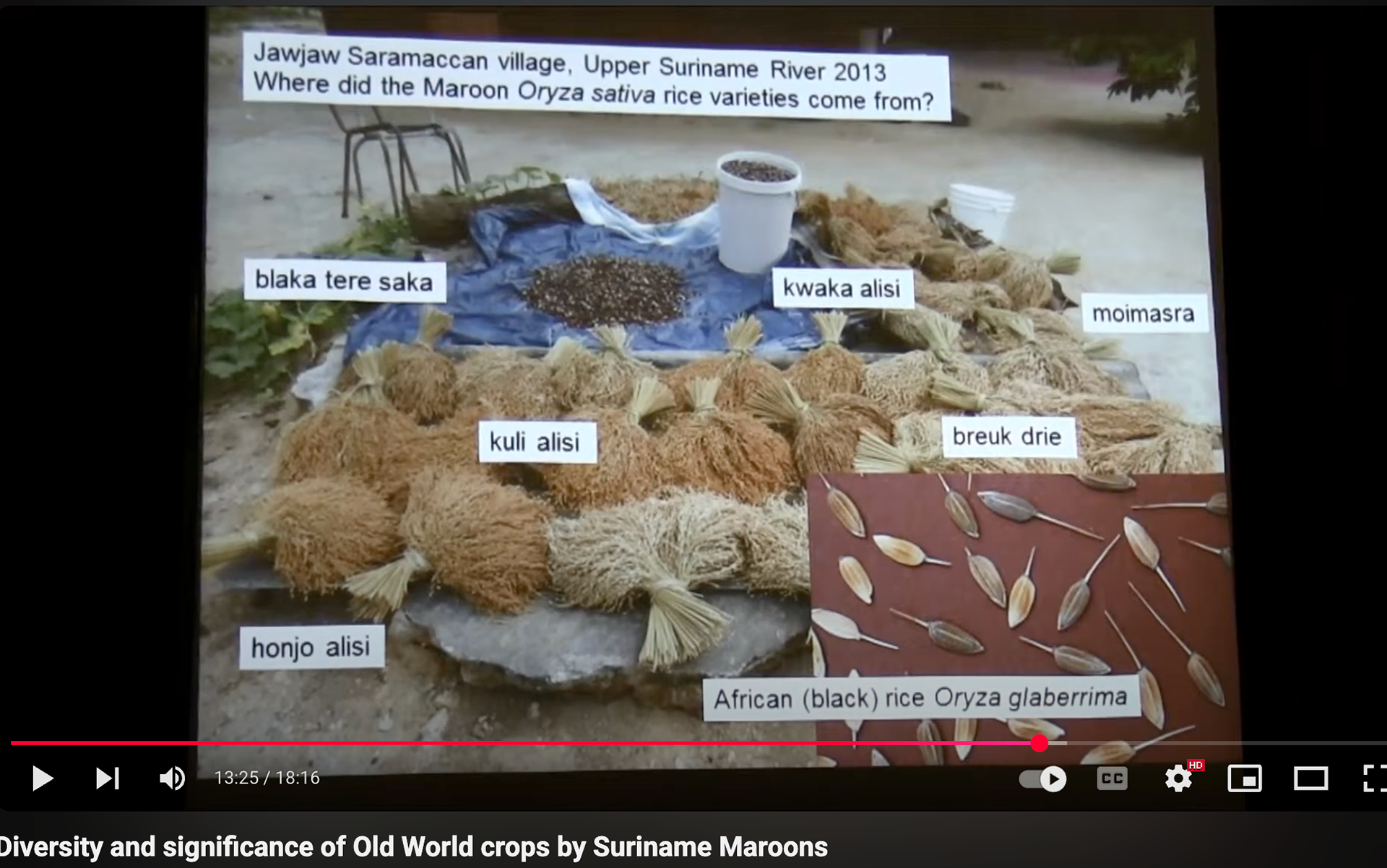
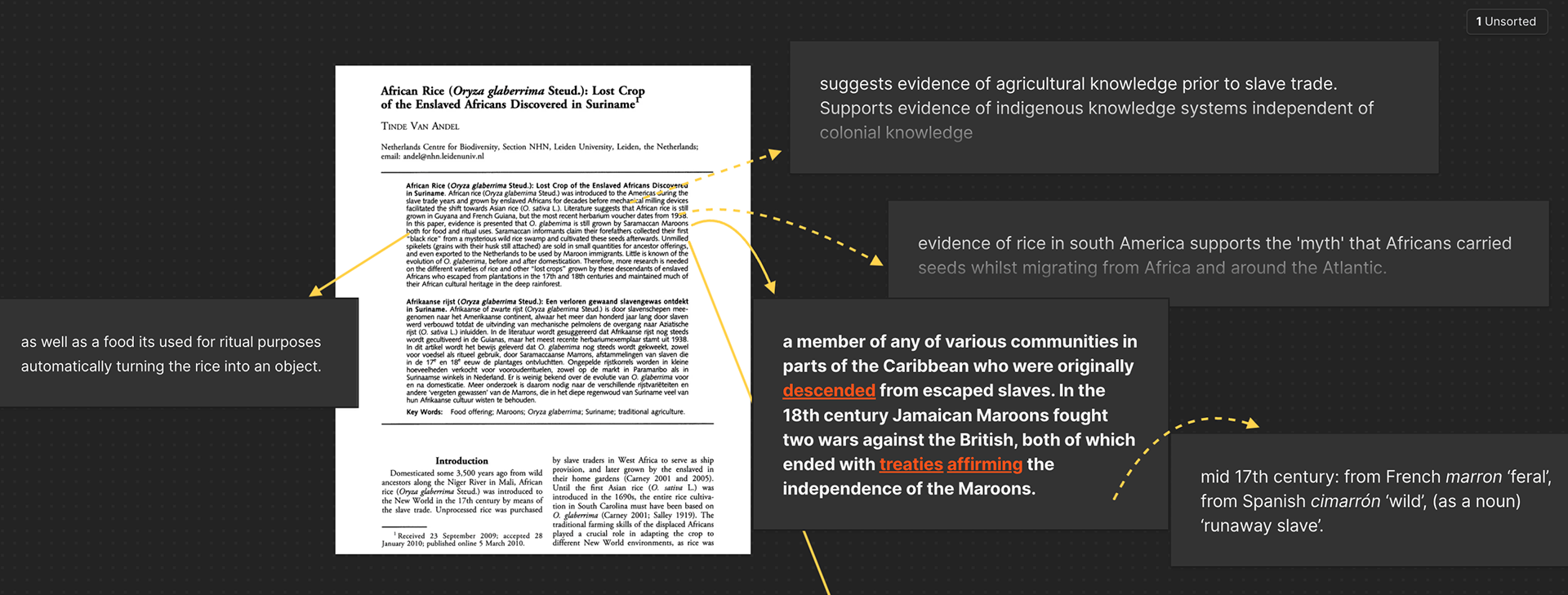
My work explores the cultural memory embedded in Caribbean produce, drawing on histories of migration, trade, and resilience. In a presentation 'Diversity and significance of Old World crops by Suriname Maroons' i watched on YouTube, i came across came across Daniel Littlefield’s Rice and Slaves, which reveals how enslaved Africans were valued for their agricultural expertise- particularly in rice cultivation, highlighting food as a vessel of identity and resistance. This insight informs my use of materials like ackee and fruit nets, which reference both organic origins and global systems of distribution. By layering recycled and found materials, I echo the tension between displacement and continuity, using familiar forms to evoke the complex legacies carried by food, people, and the objects they leave behind.
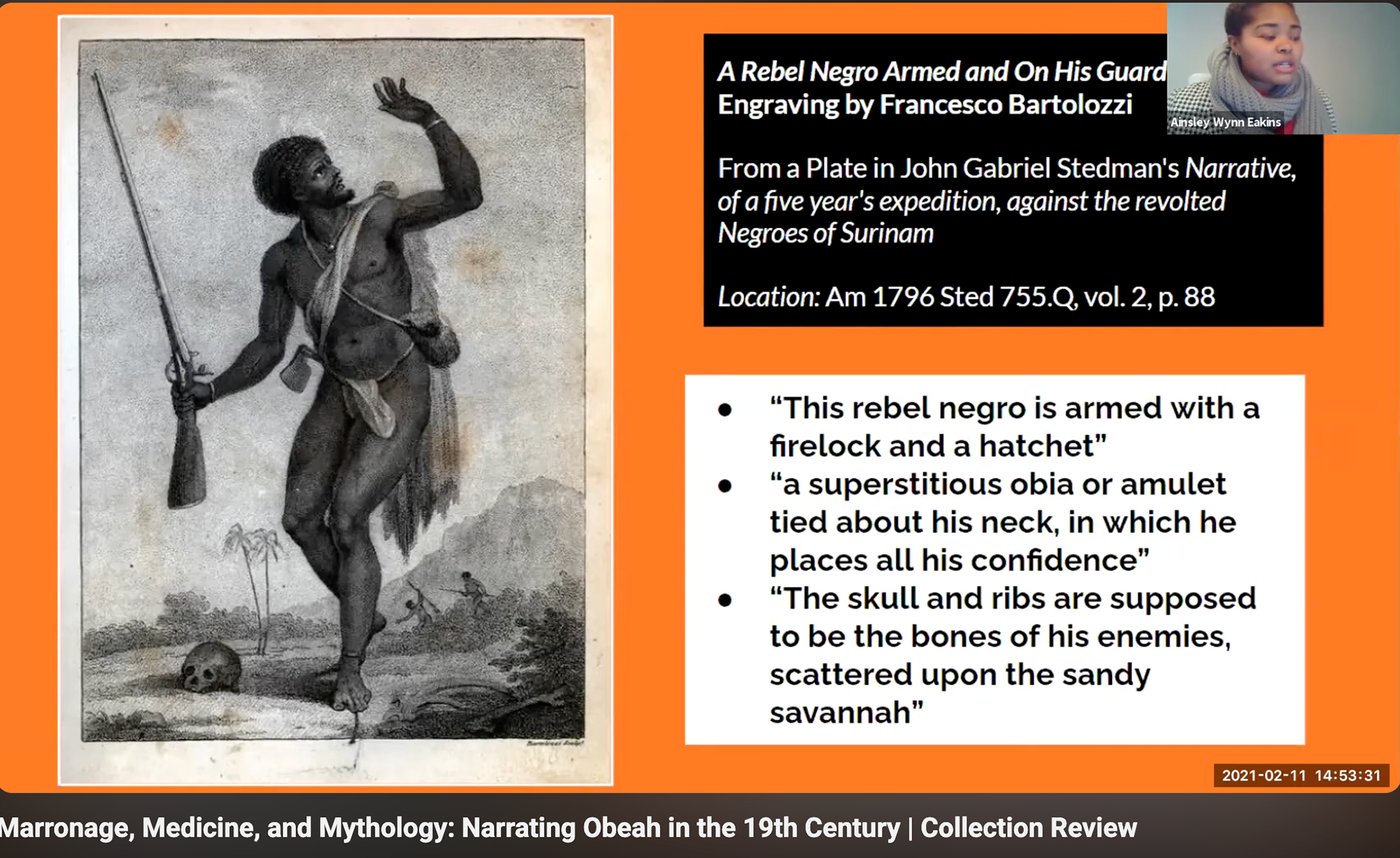

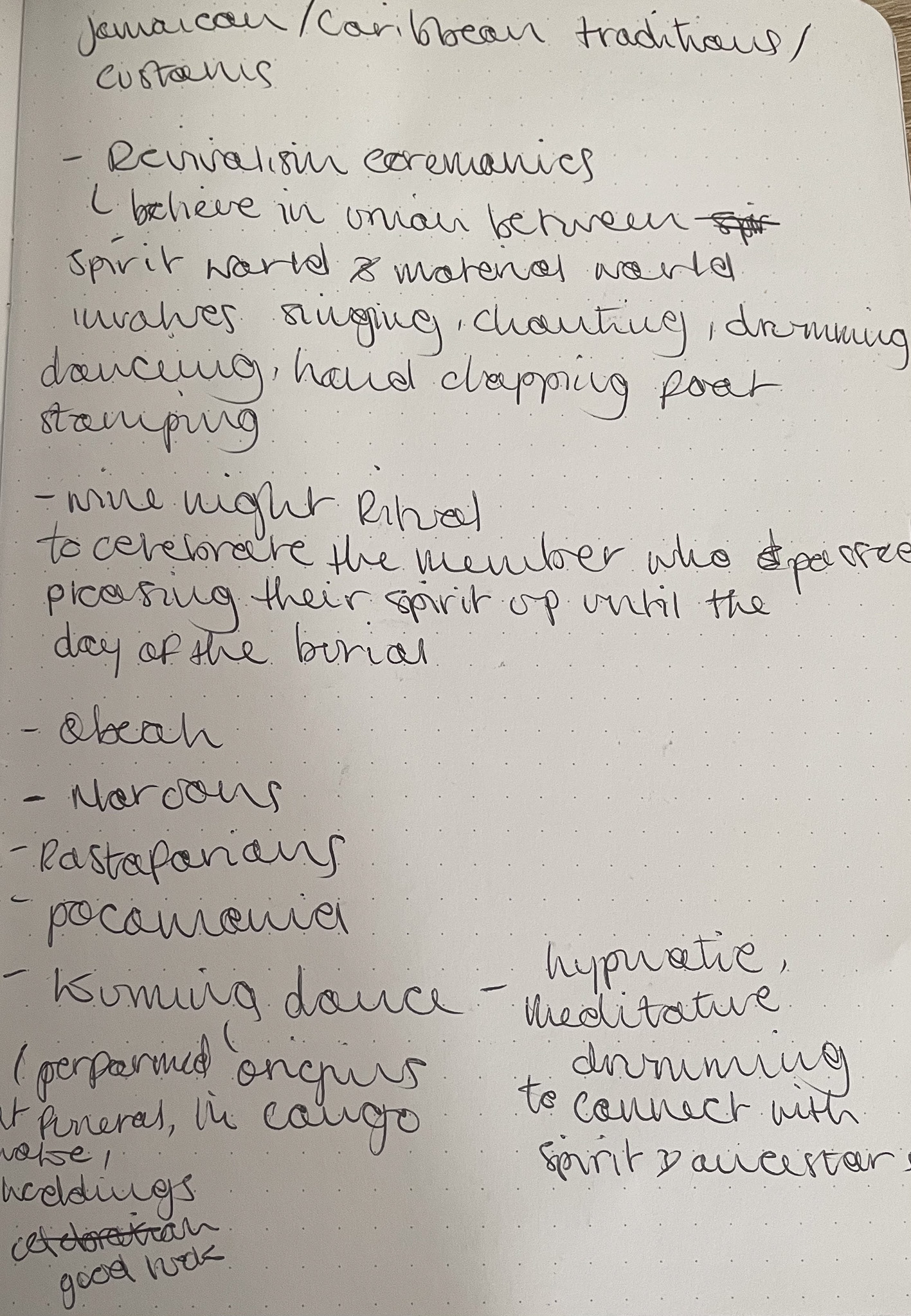
The history of Obeah directly links to my themes of hidden knowledge, erasure, and the critique of Western knowledge systems. The fact that its spiritual, medicinal, and peacemaking properties were stigmatised and criminalised directly reflects my concern with the invalidation of communal/collective knowledge if not sanctioned by Eurocentric perspectives. This aligns with my exploration of how narratives, like enslaved people carrying seeds in their hair, are dismissed as folklore due to a lack of "official" Western documentation. Obeah's journey through the Transatlantic Slave Trade and its subsequent racialization embodies the very displacement and misrepresentation of Black culture and practices that I aim to highlight and challenge in my work.
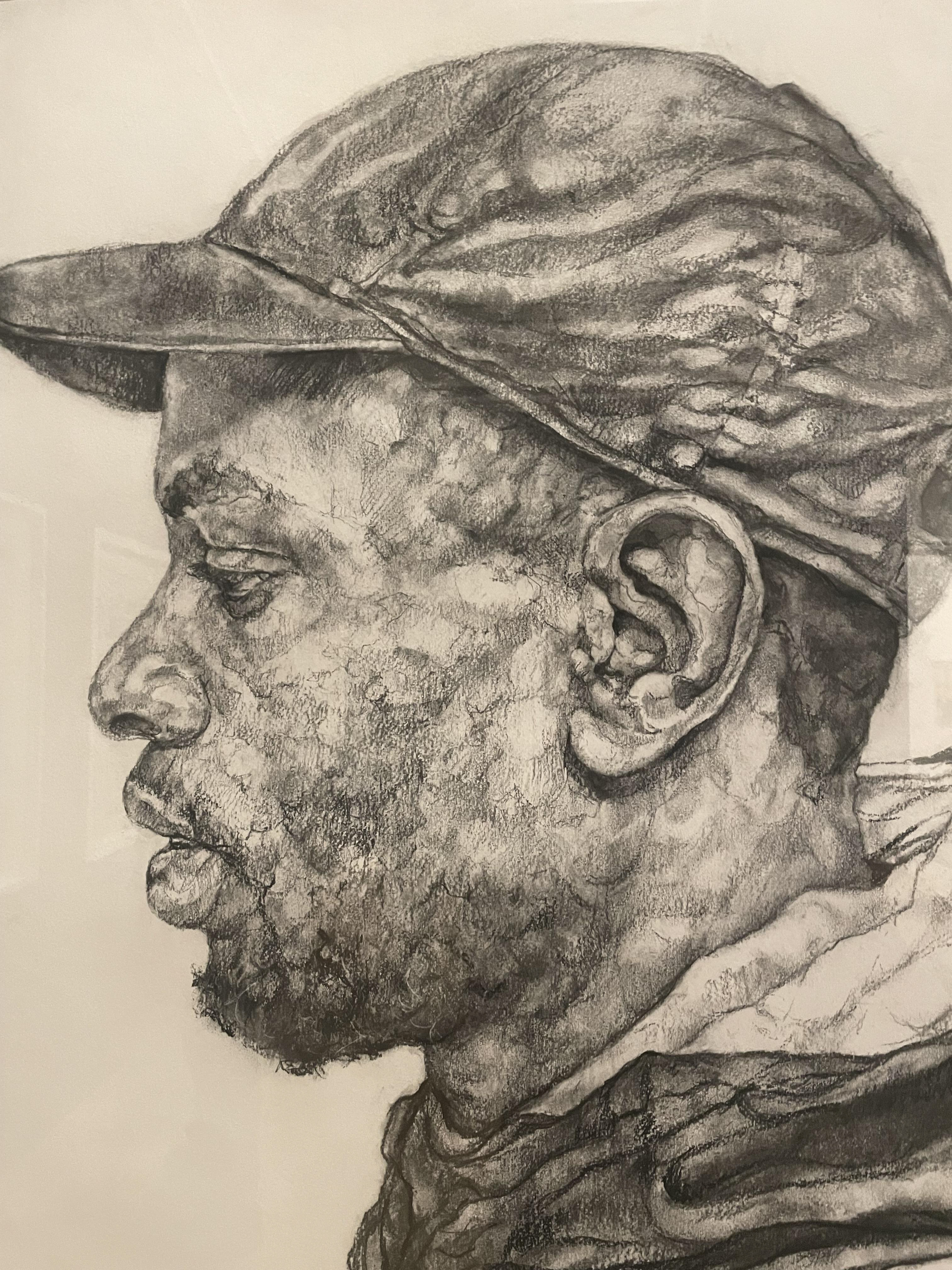
Barbra Walker, Burden of Proof 2023
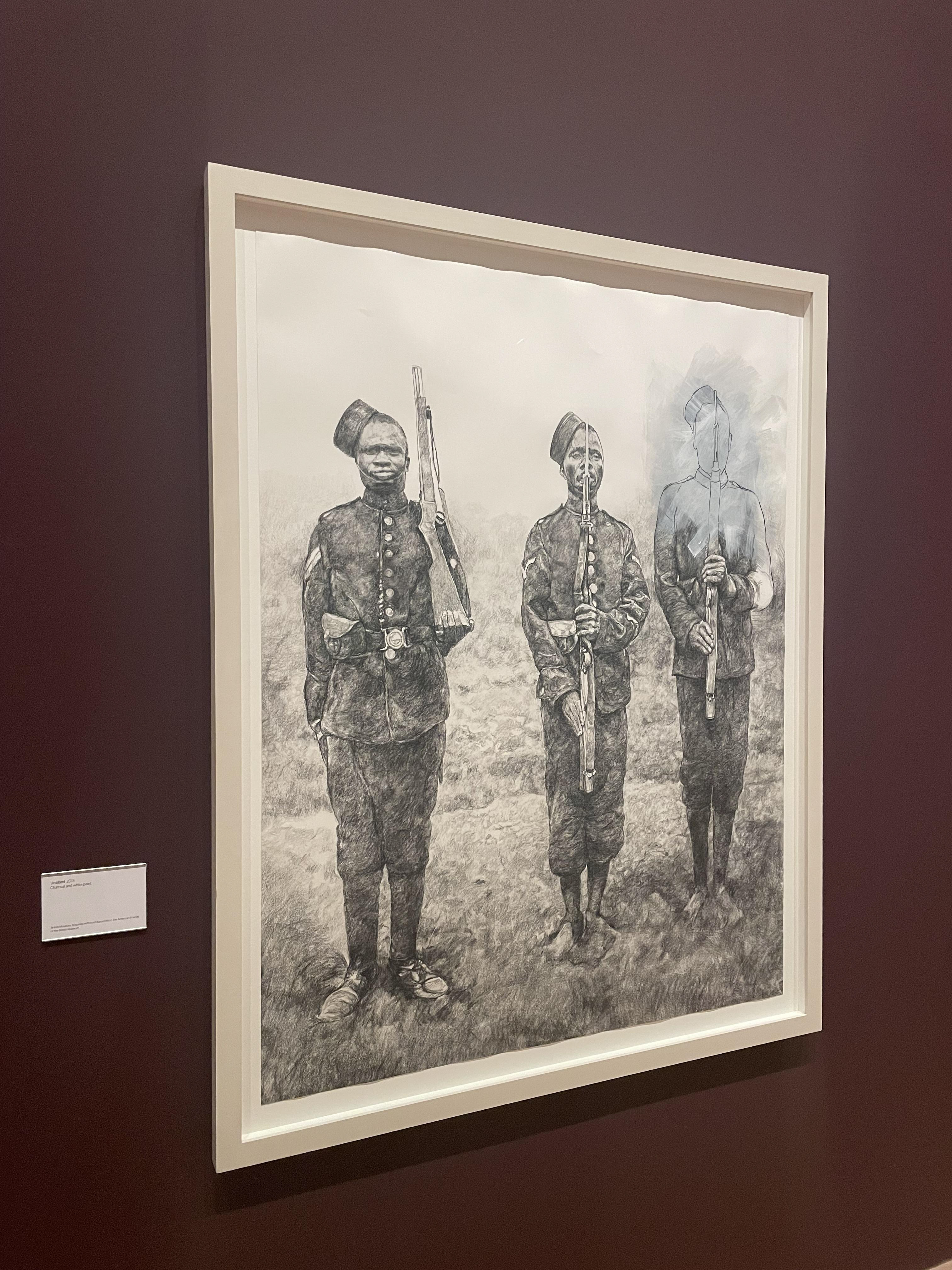
Barbra Walker, Shock and Awe 2015
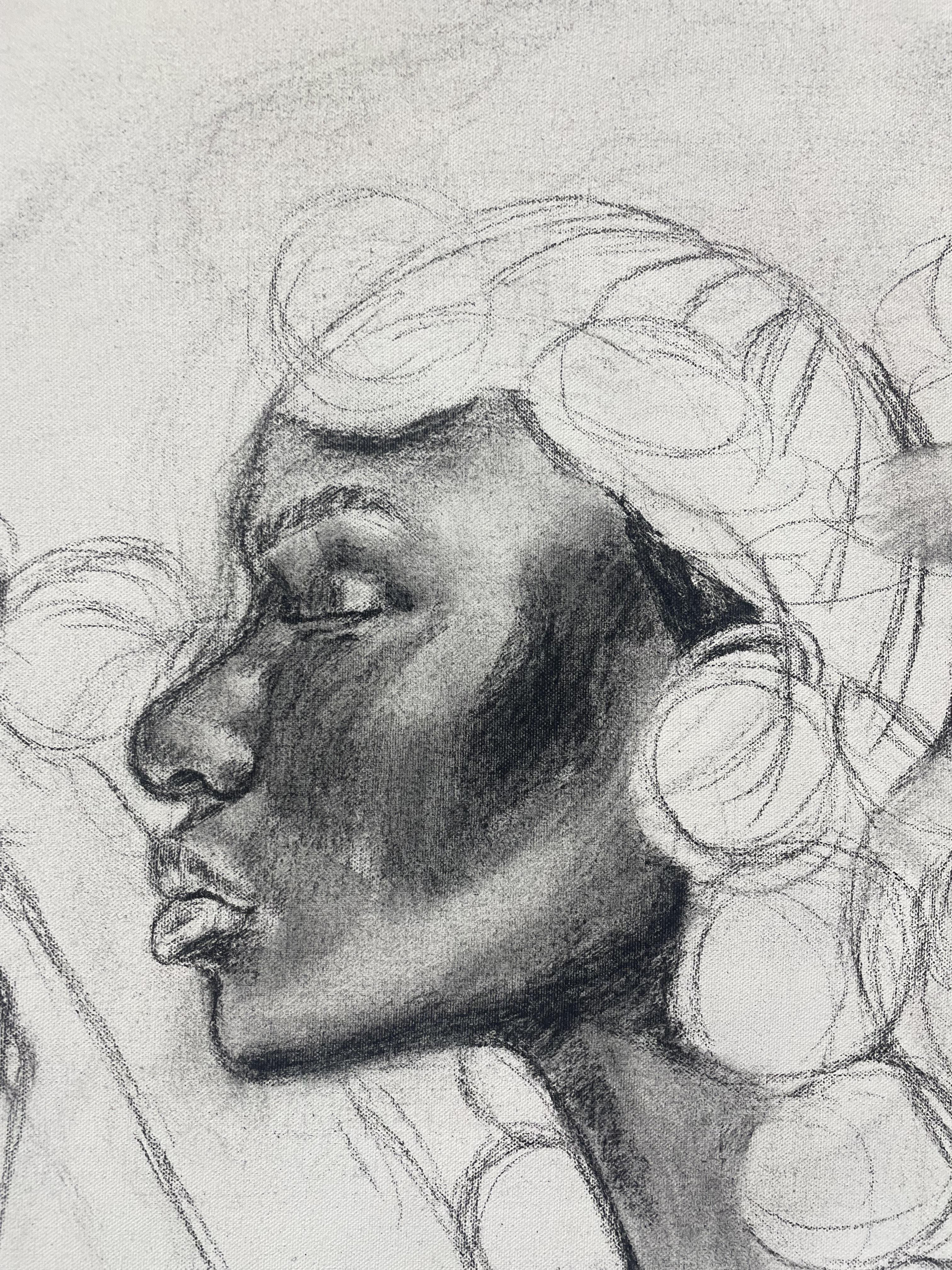
Barbra Walker's "Larger Than Life" series profoundly influenced my approach to mixed media drawing by demonstrating how scale and varied mark-making can amplify historical narratives and challenge conventional representations. The sheer size of her charcoal drawings commanded attention, forcing a confrontation with figures often marginalised in historical accounts.
Walker's nuanced application of charcoal from delicate, almost ghostly outlines to dense, powerful shadows showcased the potential of a single medium to convey complex emotions and histories. This encouraged my own experimentation with charcoal in its various forms (powder, stick, liquid) alongside other drawing media like conte and pastels. By layering these materials on diverse surfaces, such as book pages, cardboard and handmade paper, I sought to create a visual texture that echoes the fragmented nature of historical memory and the interplay between visibility and erasure, mirroring the techniques I observed in Walker's work. Her ability to weave together drawing with historical documents and illusions also validated my own impulse to incorporate textual elements and found materials into my mixed media pieces, creating a richer dialogue between the visual and the textual.
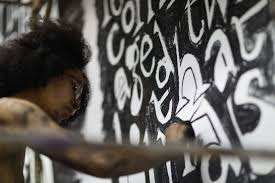

Exert from Jade Monserrat's 'a Reimagining of Relations'
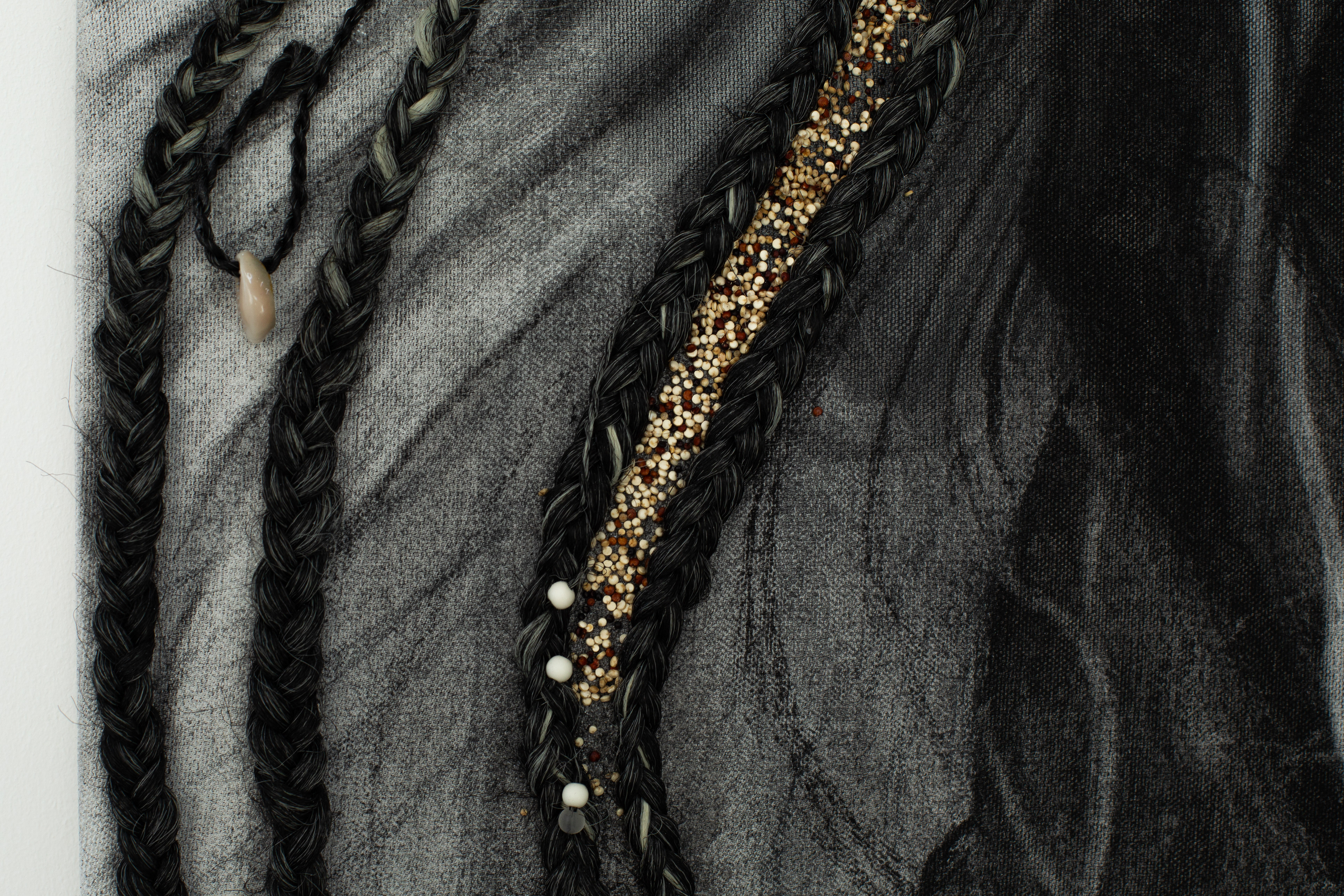

Jade Montserrat's a reimagining of relations aligns with my practice through her focus on the intersection of bodies and space, and the negotiation of identity within specific contexts. in the chapter titled 'Invisibility, Fugitivity and Hyper visibility: Exploring Black Atlantic Lives in the North of England', her mention of "amnesias and the erasures" directly mirrors my work addressing the whitewashing and invalidation of Black narratives. Montserrat's inquiry into how regions "obfuscate or help create a legacy" resonates with my critical examination of how historical documentation shapes or distorts understandings of Black history and identity, particularly in relation to the transatlantic slave trade and migration. Exploring Monserrat's themes provided a strong theoretical grounding for my material choices, especially the symbolic use of charcoal.
Whitfield Lovell, Wise Like That, 2000
Whitfield Lovell Kin VII (scent of magnolia) 2011
Whitfield Lovell's evocative integration of meticulously rendered charcoal portraits onto weathered wooden surfaces and found objects deeply resonated with my exploration of memory and history. His work imbued everyday items with a powerful sense of the past, suggesting untold stories and the lingering presence of individuals. This inspired my own incorporation of found objects, such as old grains, unwanted braiding hair and beads, alongside my charcoal drawings and paper sculptures. By placing these objects in dialogue with my artwork, I aimed to create a tangible link to the past, inviting viewers to contemplate the histories embedded within both the depicted subjects and the materials themselves, echoing Lovell's poignant ability to make the past feel present and palpable.
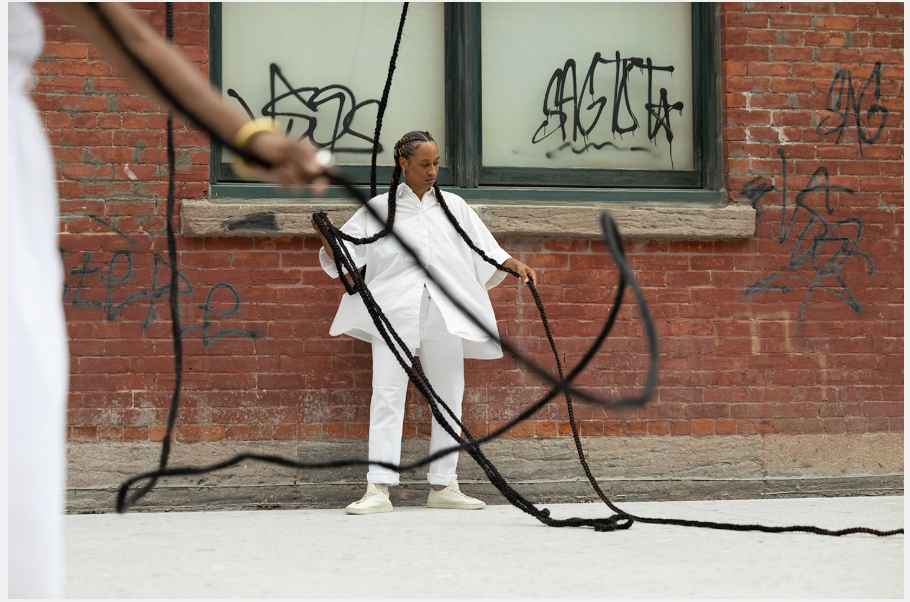
Jeannette Ehlers. "We’re Magic. We’re Real #3 (These Walls)", 2023.
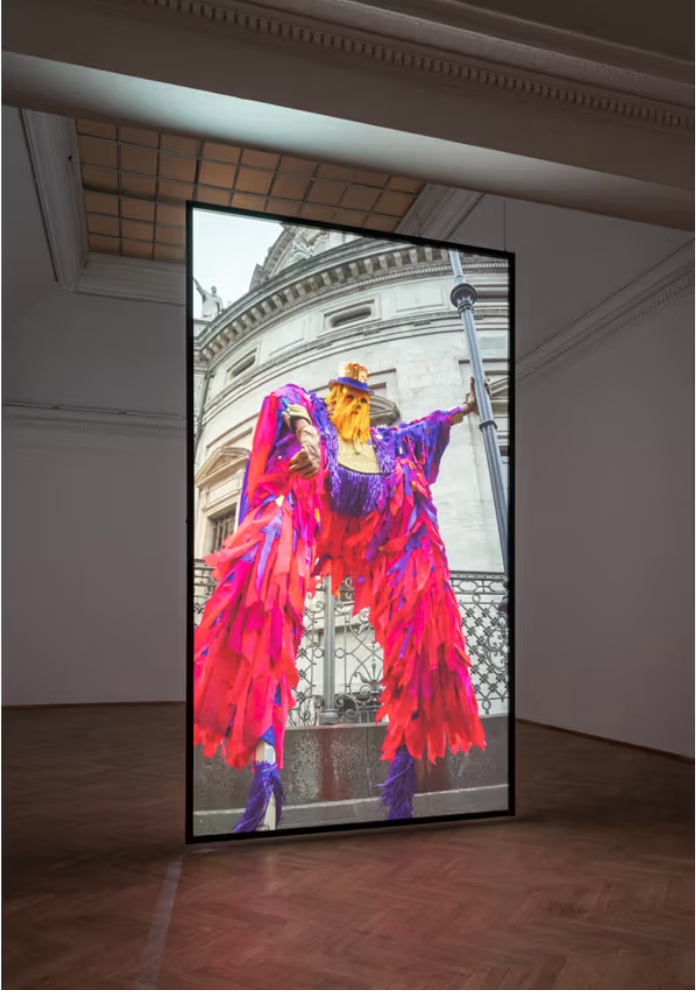
Jeannette Ehlers, Gle, 2022, Moko is Future, installation view, Archives in the Tongue: A Litany of Freedoms
Jeanette Ehlers, a Danish-Trinidadian artist, explores themes of transnationality and colonial history—central concerns in my own practice. Her performances and installations confront the enduring legacies of colonialism and their imprint on contemporary identities. In These Walls, Ehlers stages visually poetic interventions within historically charged Caribbean sites, using her body as a conduit to evoke the pain, resilience, and resistance of the diaspora. This approach inspired me to create charters that reflect my cultural heritage while engaging critically with the histories embedded in specific sites- museums, galleries, and geographical locations.
Ehlers’ incorporation of Caribbean Carnival aesthetics and performative traditions further resonated with me. Her use of vibrant symbolism and movement to explore identity and post colonial complexity informed my own work, particularly Oceanic Memory, a flag commission for the Vertical Gallery. Drawing from Carnival flags and processions, the piece explores the intersection of personal heritage and historical critique. Her work on Moko Jumbie especially echoed familiar cultural motifs across our shared diaspora.
Journal Notes
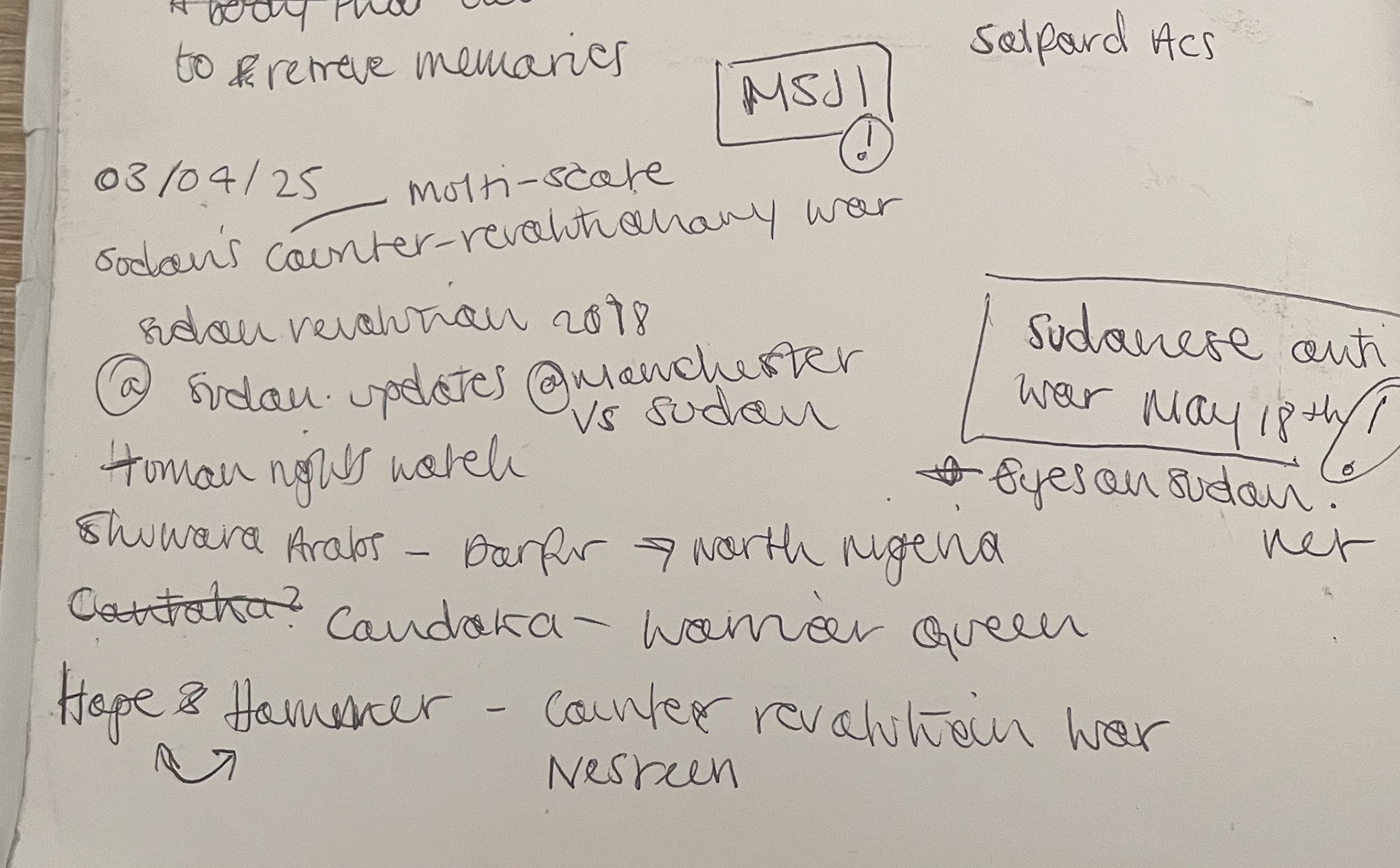
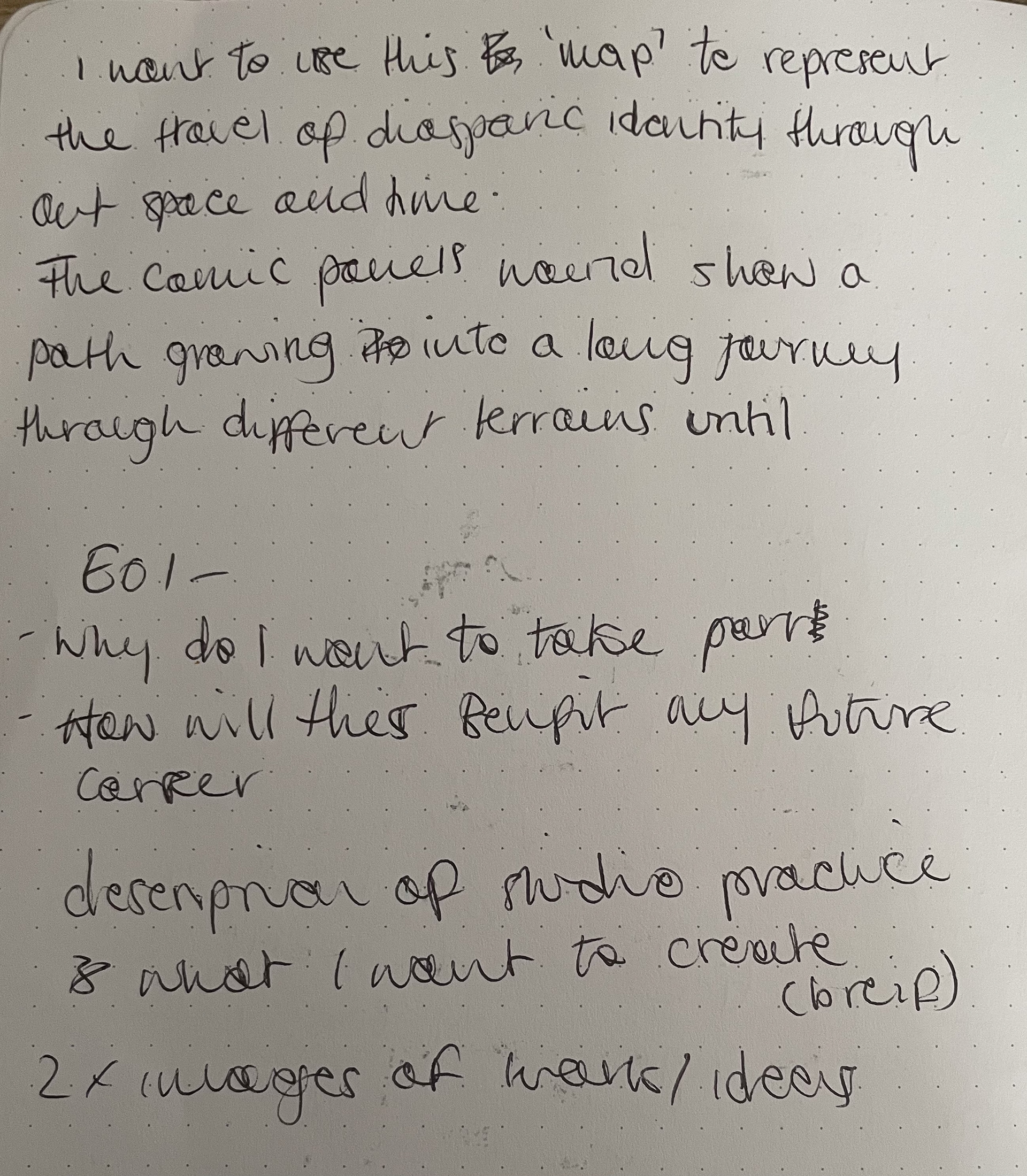
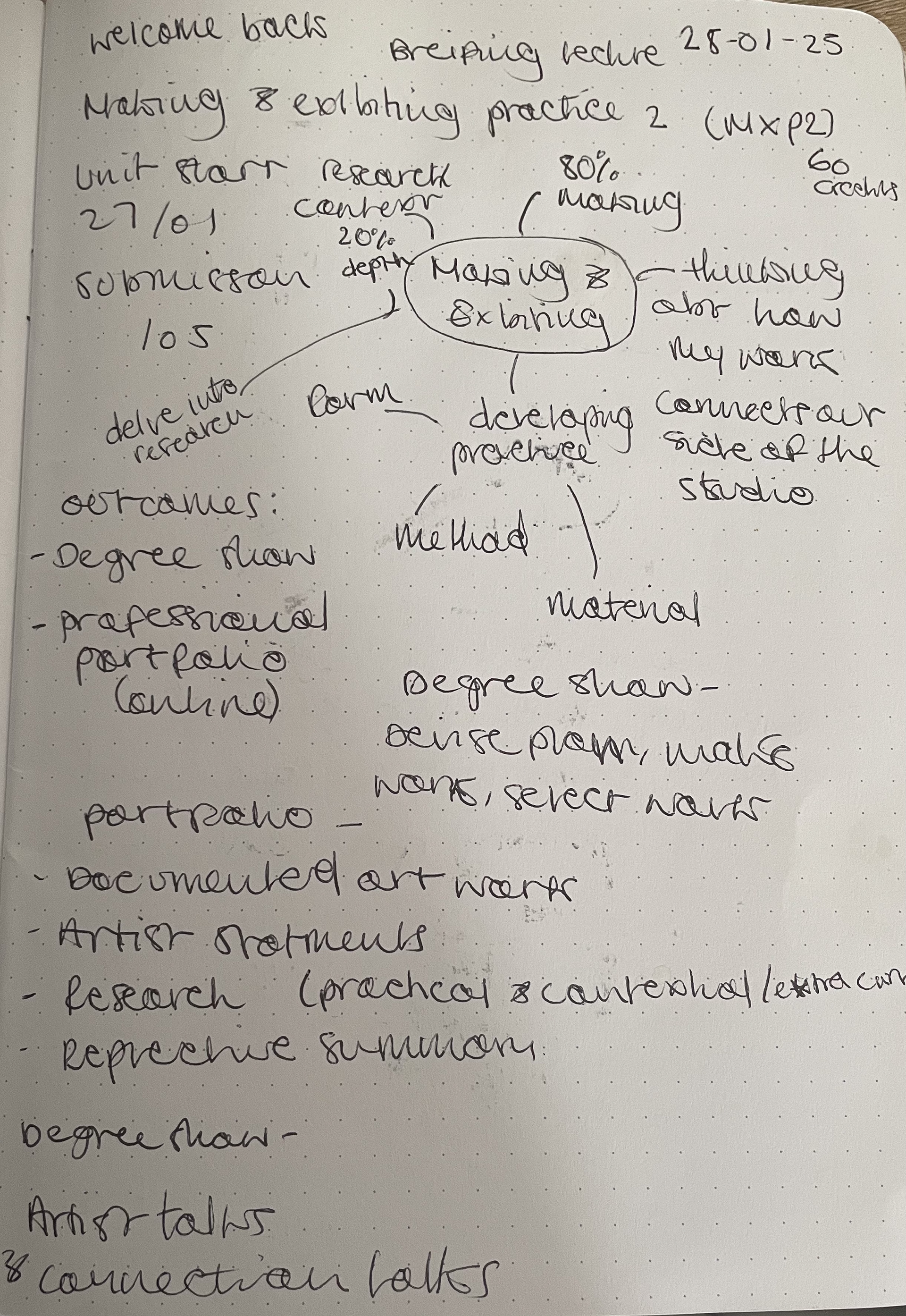


Journal Sketches
